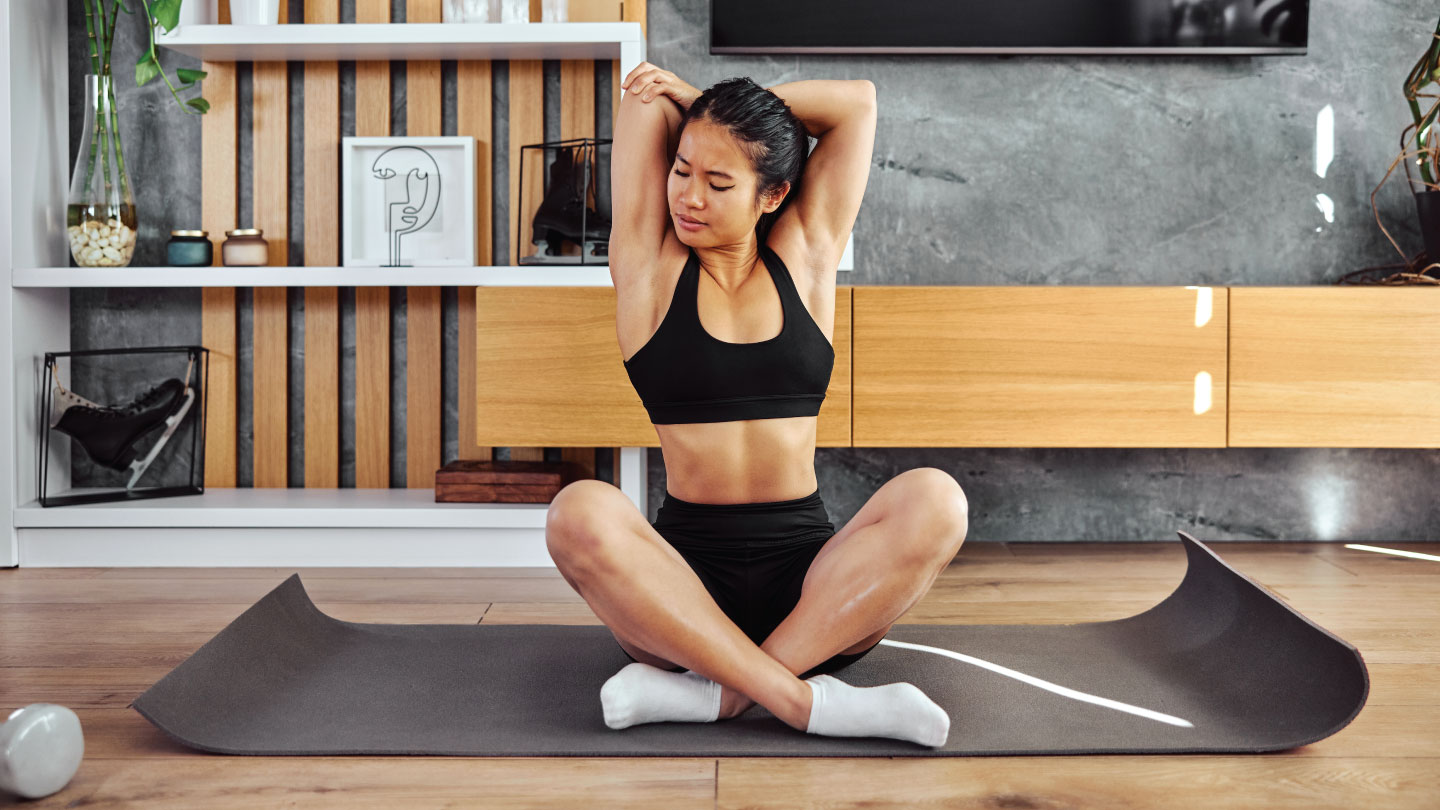Movement
Challenge Your Calves With These Walking Exercises
Explore the amazing benefits of walking with these unique exercises that are sure to challenge your calves. Learn smart ways to get your muscles moving and gain strength.

Walking is an age-old form of exercise that significantly benefits your overall health and well-being. It supports your cardiovascular health and promotes better weight management. When you’re looking to incorporate more movement into your lifestyle, why not explore some unique walking exercises?
According to Mumbai-based celebrity fitness trainer Vinod Channa, "If you want to lose weight by walking, you must walk for at least two hours every day, or 20 to 25 thousand steps, in addition to following a rigorous diet and exercise regimen."
Whether a beginner or an experienced athlete, these exercises can help you get more out of your walks and develop a stronger, healthier body.
Related Story: A Home Cardio Workout That’s Safe for Your Knees
Unlock insider access to the best movement plans for free! Sign up today.
Different Types Of Walking Exercises You Should Try
1. Try Brisk Walking
Most people misunderstand what brisk walking means. When done correctly, , brisk walking can get your heart rate up, burn calories, and improve your mood.
Brisk walking is faster and more intense than regular walking, and you have to make sure to swing your arms as you move to get the most out of it. Ideally, you should try brisk walking for at least 30 minutes daily. ”Focus on your footwork when you do walking workouts. Bad footwork (overextending the knee, large steps, impacting the ground with force) can cause back and knee pain,” says Vinod.
Brisk walking can help strengthen your legs and core muscles while still being easy on joints like your knees and ankles. It’s a safe activity for all ages.
Related Story: Can Running On An Incline Save Your Knees?
2. Achieve More With Power Walking
Power walking is a great way to get your blood pumping and your heart rate up. It's essentially just an elevated version of brisk walking and can be done almost anywhere. The best part is you don’t need any special equipment or location, just the desire to move and the willpower to keep going.
The key difference between brisk walking and power walking is speed. The ideal pace for power walking should be around 4 miles per hour/6 km per hour. That's fast enough that you won't be able to carry on a conversation, but not so fast that you're sprinting or running.
The ideal time for power walking is around 30 minutes at least five times a week. With this combination of frequency and duration, you can easily maintain an aerobic workout that may help you burn an average of 400-600 calories per hour. This makes power walking one of the most effective exercises for burning fat quickly and efficiently, plus its low impact which makes perfect for those with joint issues. Vinod also recommends wearing supportive footwear when you’re planning on power walking and building up to doing 60 minutes to keep yourself healthy.
Related Story: Do You Really Have to Walk 10,000 Steps a Day
3. Set A Good Pace With Race Walking
Race walking is an aerobic activity that combines walking and running. It is an excellent exercise for fitness levels at all stages, from novice to intermediate and advanced walkers. Race walking allows the body to burn more calories than just a regular walk while improving speed and endurance.
Race walking involves using proper technique. Participants must maintain contact with the ground at all times, the leading leg must stay straight, and the back toe must not come off the ground until after the front foot's heel has touched down. When executed properly, race walking can provide an intense workout that can be done anywhere as it does not require any special equipment or location.
The average race walker will typically cover four miles in about 40 minutes or so, burning between 270-420 calories per hour depending on their weight and level of intensity.
Related Story: Running Safety: What These Marathoners Want You to Know
Unlock insider access to the best movement plans for free! Sign up today.
4. Forget Jogging: Try Chi Walking
Chi Walking is a form of exercise that combines walking with Tai Chi principles. It’s a gentle, low-impact workout that can benefit people of all ages and abilities. In Chi Walking, you move your body in a slow, mindful way that focuses on alignment and relaxation while providing an intense cardiovascular workout.
The idea of Chi Walking is to become more aware and connected with your body as you walk. You start by learning how to properly align the legs, feet and hips, so you get the most out of each stride. You also learn breathing techniques for greater relaxation and focus as well as different movements or postures for increased energy flow throughout the body.
Begin with 30 minutes to get your body adjusted. 30-minute sessions can burn around 300 calories, depending on the intensity level. Since Chi walking focuses more on form than speed, you don’t have to worry about pushing yourself too hard or becoming injured.
Related Story: Easy Guide To Releasing Stiffness With A Foam Roller
5. Transform Your Exercise Routine With Nordic Walking
Nordic walking is another type of walking exercise that has people of all ages and ability levels getting out and moving. It's a full-body workout based on the classic cross-country skiing technique, and it's growing in popularity as a great way to stay active outdoors.
So what exactly is Nordic walking? In essence, it involves using specially designed poles to add extra resistance while you walk. This allows your arms and upper body muscles to get involved in the movement, so you can burn more calories than regular walking alone. The added resistance also helps enhance your endurance and overall fitness level over time. Plus, since you rely on poles for balance and support while moving at a steady pace, your joints have less stress than jogging or running.
Related Story: How to Start Running: A Plan for Beginners
6. A Different Kind Of Walk: Stroller Walking
Stroller walking is a great way for parents and caregivers to stay active while enjoying the outdoors with kids. It’s the best way to take care of your child while managing to get some exercise. Stroller walking can be done anytime, as long as you have ample walking ground.
Stroller walking is simple yet effective. Ensure that you have a durable stroller and the right footwear before starting. Begin by pushing the stroller at a brisk pace; this will help keep both you and your baby entertained while also burning calories.
If you’re looking for something a bit more challenging, Vinod also recommends these walking workout variations. Do 5-10 moves one after another to feel the burn:
- High knee and hug (helps in hamstring opening and hip joint opening),
- Side-to-side walk (helps in hip strengthening )
- Front leg kick, cross leg kick (helps improve hamstring flexibility)
- Clockwise and anti-clock rotations (strengthens the inner thigh and outer thigh)
- Knee bend ankle hold (helps knee mobility and single-leg balance)
- High knee and claps under the hamstring
- Backward walking (benefits the hamstring and hip)
Related Story: Nutritive Postpartum Diet for Working Mothers
Simple Tips For Stress-Free Walks
- You don't need to go overboard with your gear, but putting on a comfortable outfit can make a big difference.
- Keep yourself adequately hydrated before and after your stroll—it's essential for staying energised and healthy.
- Jumpstart your workout with an energising warm-up.
- Challenge yourself to take a stroll further than ever before every day.
- Pay close attention to how you walk, keeping your posture upright and strong.
- Boost your workout with weights for an extra dose of energy.
- Harness the power of altitude while walking, take advantage of any inclines or hills to get your blood pumping and feeling energised.
- Walk to workout music or fast-paced tunes.
- Wrap up your workout with a relaxing stretching routine.
Trainer's quote: "If you want to lose weight with walking, you must walk for at least two hours every day, or twenty to twenty-five thousand steps, in addition to following a rigorous diet and exercise regimen."

Related Story: The World’s Greatest Stretch: Why Everyone Should Do It Every Day
FAQs
1. How Many Miles Should I Walk In A Day?
The general consensus among fitness professionals is that an average person should aim for somewhere between 3-5 miles per day which is about 7000 to 10,000 steps. This range provides enough physical activity to benefit your overall health without overworking your body. Of course, everyone is different, and you must listen to your body when determining how much you should walk each day.
2. Does Walking Build Muscle?
The short answer is yes, walking can help you to build muscle. It may not be as effective as going to the gym and lifting weights, but regular walks can provide an effective way of toning your body. Walking strengthens the muscles in your legs while engaging other muscles like those around your abdominal area. As long as you walk with a purposeful stride and at a brisk pace, you’ll get the most out of each step – which will help give your body an overall toned appearance.
Related Story: Bulking And Cutting: Ways to Get More Muscle Definition
3. How Many Calories Are Burned In A 20-Minute Walk?
The amount of calories burned during a 20-minute walk depends on several factors, including age, gender, weight, and pace. Generally speaking, an average person will burn between 90 and 140 calories by walking for just 20 minutes at a moderate pace. That may not seem like much, but these numbers add up quickly when done regularly.
Walking exercises can be a great addition to any fitness routine. Whether you want to focus on the intensity of your workout or just slow it down and enjoy the scenery, there is something for everyone. With proper guidance and some experimentation, you can easily find a type of walking exercise that best suits your lifestyle and fitness goals. Taking time to experiment with different walking styles will help you get the most out of each session, so don’t be afraid to try something new.
Unlock insider access to the best movement plans for free! Sign up today.
EXPLORE MORE
A home-based yoga routine can elevate energy, sharpen focus, and nurture mental calm. Discover why it’s worth starting now.
Your posture is whispering a story about stress, screens, and slouching. Here are 6 exercises you must try!
In a world addicted to speed, Shavasana is proof that true regulation begins when you slow down. Discover how this humble pose is the simplest solution to the chaos within you!
When your thoughts won’t slow down, these yoga poses teach your body to stay present in the moment.








.jpg)
.jpg)
